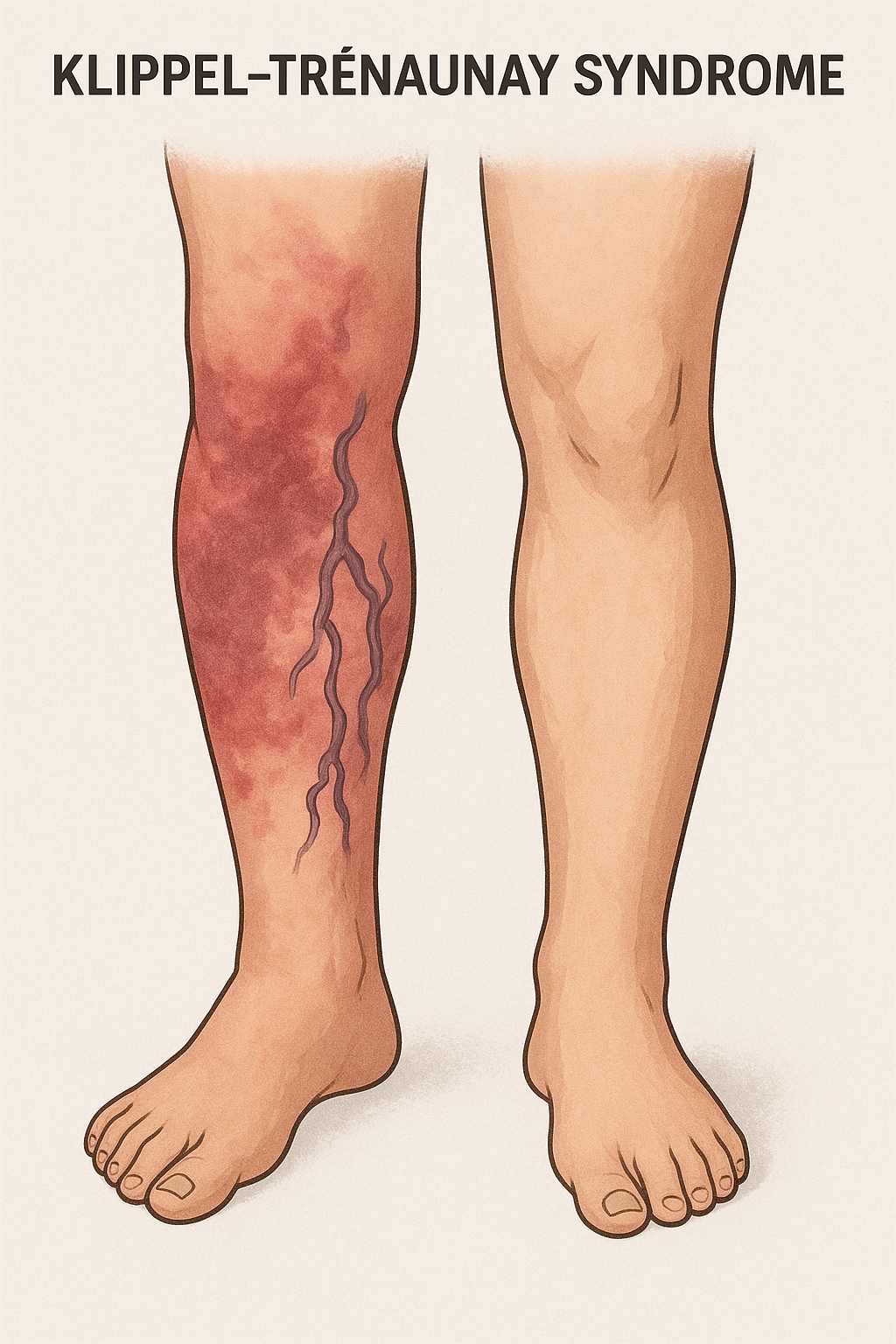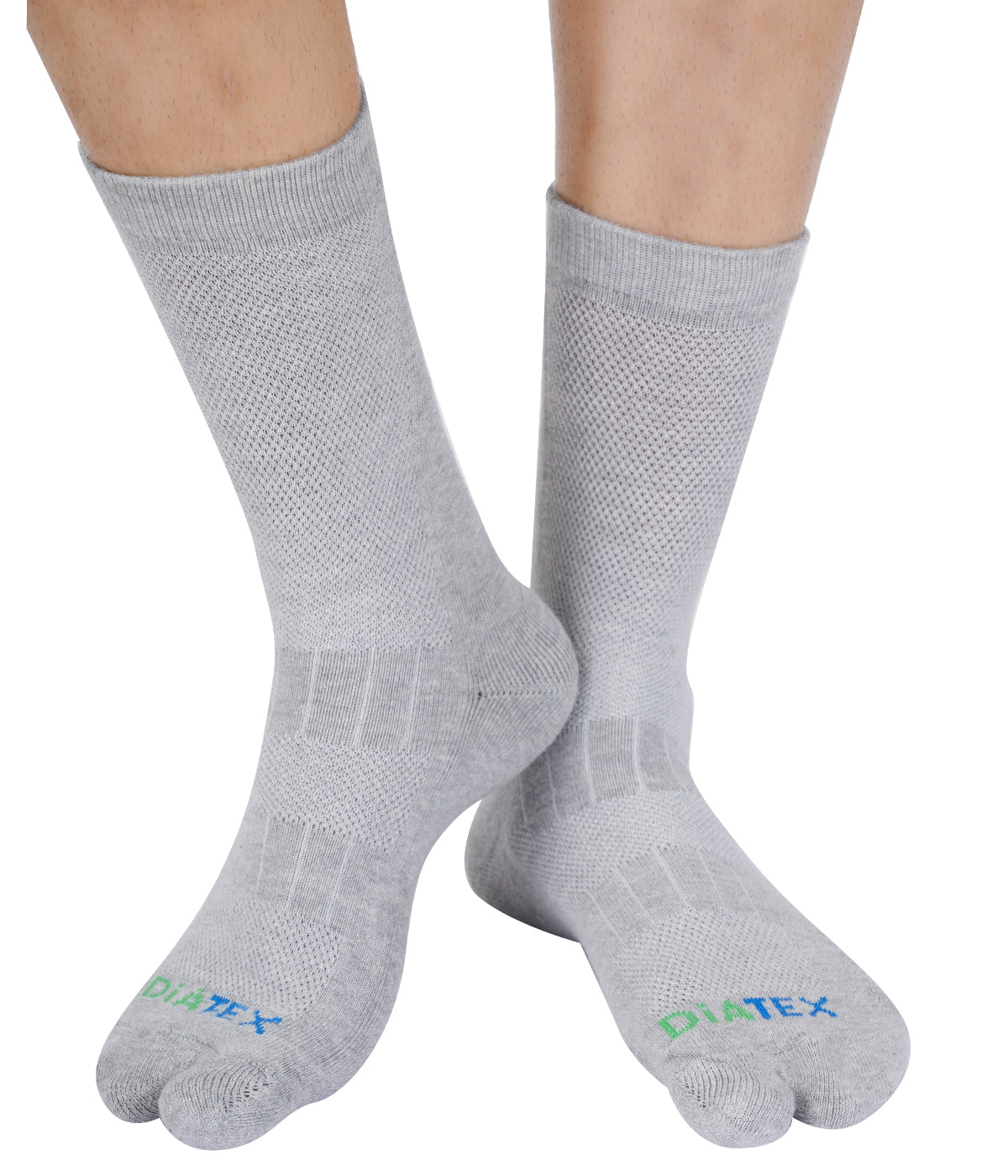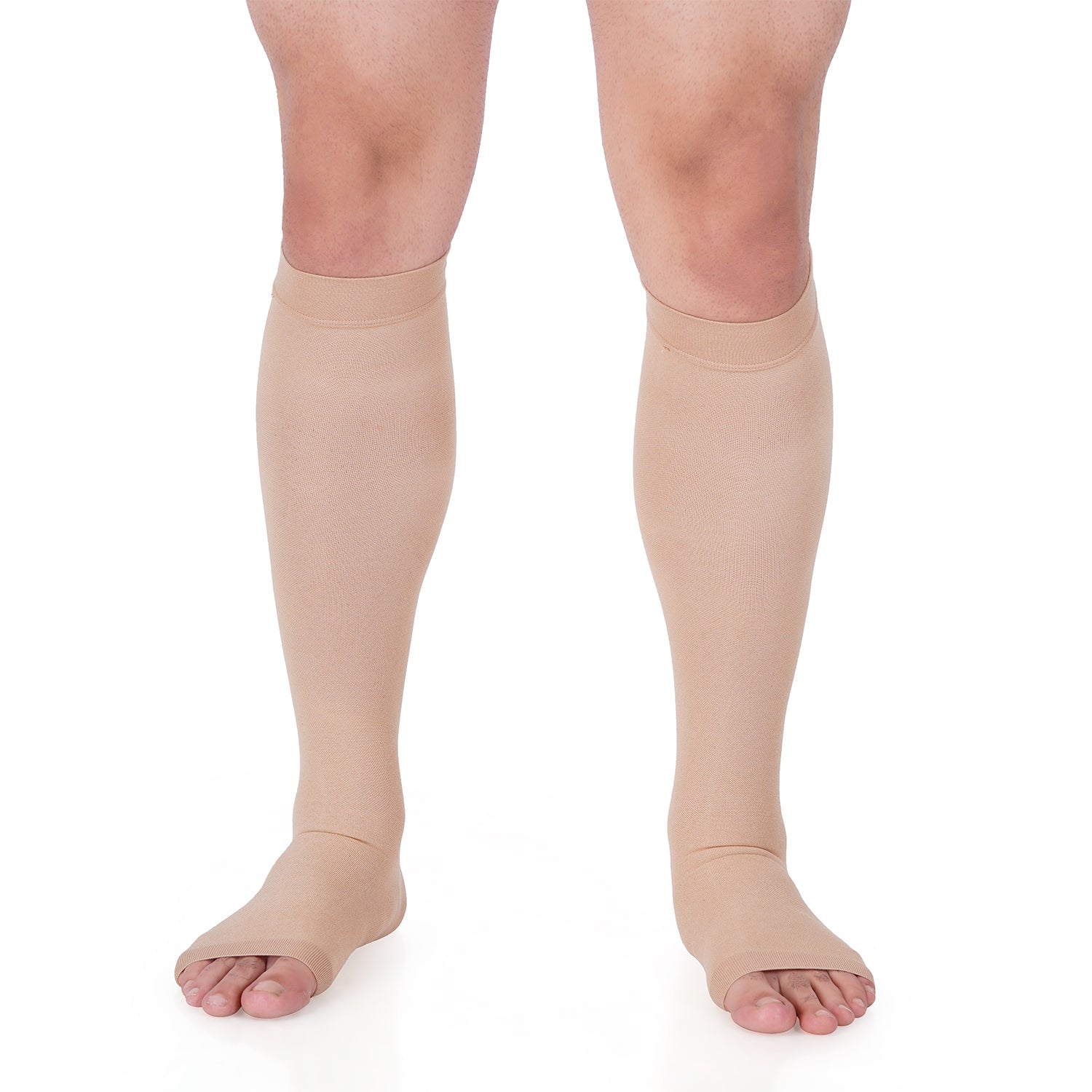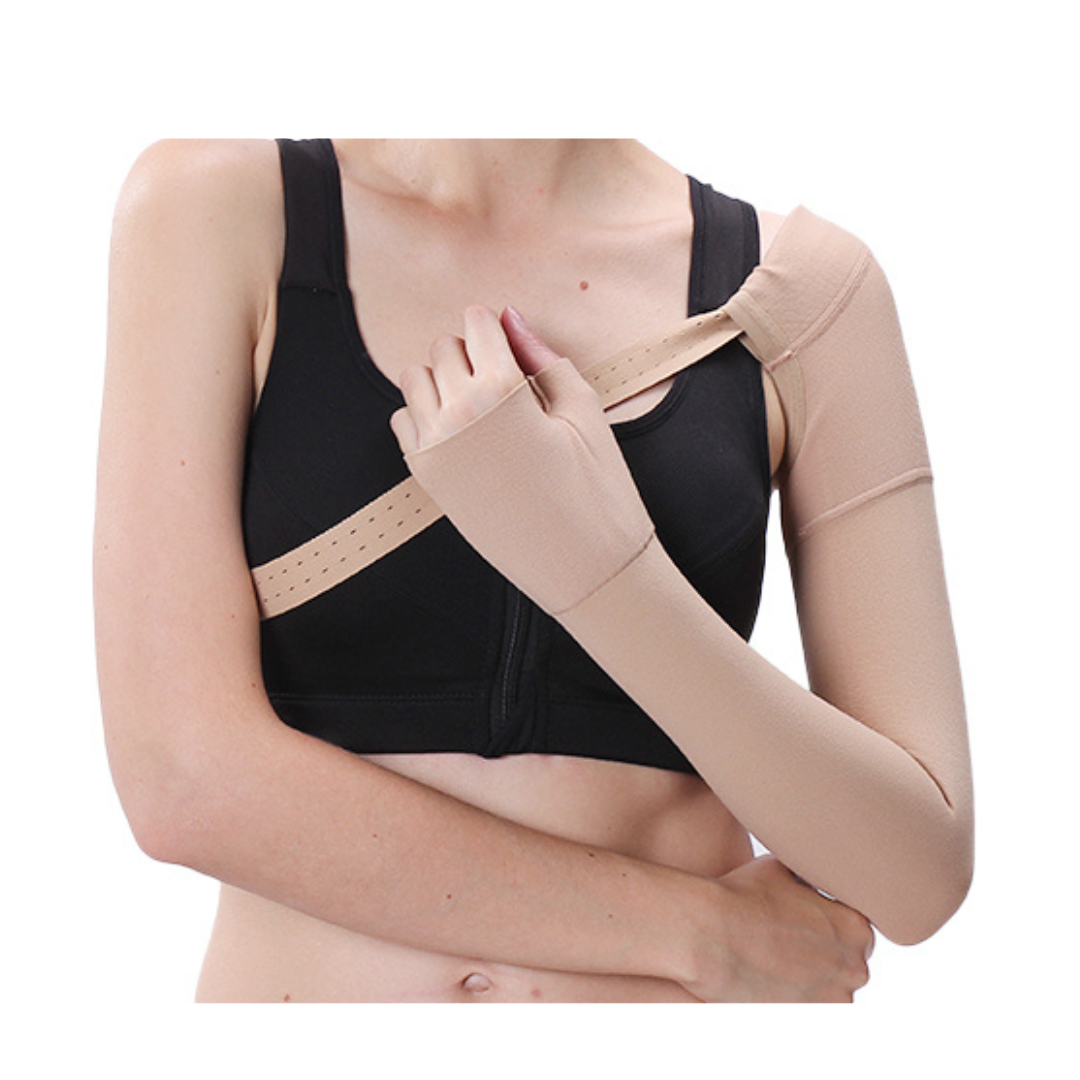Klippel–Trénaunay Syndrome (KTS) is a rare, congenital vascular disorder affecting approximately 1 in 100,000 live births. It's characterized by a triad of symptoms: a port-wine stain (capillary malformation), abnormal overgrowth of soft tissue and bone (usually affecting a limb), and venous and/or lymphatic malformations. While the exact cause is still under research, it's understood to be a developmental anomaly present from birth.
Key Features of KTS:
-
Port-Wine Stain: A red or purplish birthmark, often flat and irregular, that can vary in size and typically covers part of the affected limb.
-
Limb Overgrowth: The affected limb (most commonly a leg, but can also be an arm, trunk, or even the face) may be noticeably longer and/or larger in circumference due to the overgrowth of bone and soft tissues.
-
Venous and Lymphatic Malformations: This is a critical component of KTS. These can include:
-
Varicose Veins: Often atypical, large, and deep, potentially leading to discomfort and complications.
-
Lymphatic Malformations: Impaired lymphatic drainage can cause swelling (lymphedema) and increase the risk of infections.
-
Deep Vein Anomalies: Sometimes, the deep veins in the affected limb are underdeveloped or absent, making superficial veins the primary route for blood return.
-
Complications Associated with KTS:
Individuals with KTS can experience a range of complications, depending on the severity and location of their malformations. These may include:
-
Pain and Heaviness: Due to enlarged veins and increased limb weight.
-
Bleeding: From fragile superficial veins.
-
Skin Changes: Ulcers, infections (cellulitis), and thickening of the skin.
-
Deep Vein Thrombosis (DVT): Increased risk of blood clots, especially in abnormal veins.
-
Lymphedema: Chronic swelling due to impaired lymphatic drainage.
-
Functional Limitations: Difficulty with mobility and everyday activities due to limb discrepancy or swelling.

The Vital Role of Compression Stockings in KTS Management
For many individuals living with KTS, compression therapy, particularly through the use of medical-grade compression stockings, is a cornerstone of management. These specialized compression stockings play a crucial role in mitigating symptoms and preventing complications.
How Compression Stockings Help:
-
Support Venous Return: By applying graduated pressure, compression stockings gently squeeze the limb, helping to push blood from the superficial veins back towards the heart, especially when deep veins are compromised. This improves circulation and reduces venous pooling.
-
Reduce Swelling and Lymphedema: The external pressure helps to reduce fluid accumulation in the tissues, decreasing swelling (edema) and managing lymphedema, which is common in KTS.
-
Alleviate Pain and Heaviness: By supporting the veins and reducing swelling, compression stockings can significantly lessen the feeling of pain, aching, and heaviness in the affected limb.
-
Prevent Skin Complications: Reduced swelling and improved circulation can help prevent skin breakdown, ulcer formation, and reduce the risk of infections like cellulitis.
-
Minimize Bleeding Risk: Compression can help stabilize fragile superficial veins, potentially reducing the risk of bleeding from minor trauma.
-
Enhance Mobility and Comfort: With reduced swelling and improved comfort, individuals often find it easier to move and participate in daily activities.
Choosing the Right Compression Stockings:
It's essential for individuals with KTS to consult with their healthcare provider or a vascular specialist to determine the appropriate compression level (measured in mmHg) and style of stocking. Our range of medical-grade compression stockings is designed to provide effective and comfortable support for various needs.
Our Compression Stockings Offer:
-
Graduated Compression: Tighter at the ankle and gradually decreasing up the leg to promote optimal blood flow.
-
Durable and Breathable Fabrics: Designed for comfort and long-term wear, even for sensitive skin.
-
Variety of Styles: From knee-high to thigh-high, open-toe or closed-toe, to suit individual preferences and specific medical requirements.
-
Precise Sizing: Crucial for effective compression therapy. We offer a comprehensive sizing guide to help you find the perfect fit.
Managing KTS requires a multi-faceted approach, and high-quality compression stockings are an indispensable tool in this journey. Explore our collection today and experience the difference that proper compression can make in enhancing comfort, reducing symptoms, and improving quality of life for those with Klippel–Trénaunay Syndrome.
Disclaimer: This content is for informational purposes only and does not constitute medical advice. Always consult with a qualified healthcare professional for diagnosis and treatment of Klippel–Trénaunay Syndrome or any medical condition.












